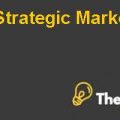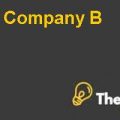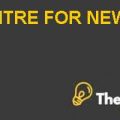TIMKEN CORPORATION TRANSFER PRICING Case Study Solution
Advantages and Disadvantages of Transfer Pricing in relation to TIMKEN
Advantages
When we consider the advantages for the organization as a whole, then the organization’s current structure of providing at a cost plus margin status is a beneficial way of providing the steel to the AUTOMOTIVE unit. The low cost structure provides organizational benefit as more recognition is available and the organization will show higher profits as a combined entity which will increase the shareholder confidence, the market confidence, and will increase the position of the equity of the organization in the Regulated markets.
For the AUTOMOBILES and the INDUSTRIAL BEARINGS section, as the complete raw material being needed is 100% internally sourced from the STEEL department; this will be of a very higher quality as compared to the market, and there will be no lead times and other product delivery issues being recorded which suggests that the production and operations are not being halted and no further costs will be required in the organization being out of stock.
Another advantage, specifically for the STEEL division is that $ 150 Million of the $ 1 Billion revenue of the Business unit is being generated from the internal transfer pricing which is at 15%. Due to the uncertain times of regression, and the operational capacity of the unit working at 70% of capacity, this is a plus factor as a fixed Revenue is being generated here.
Disadvantages
The disadvantages to the product would deal in the firstly towards the different business units showing more profit which will be subject to more taxes being paid to the Government.
The other disadvantage is the perceived autonomy which is not available to the AUTOMOTIVE and the INDUSTRIAL units to perform and make use of all the Economies available to a big multi-national organization which will tend to the organization having high costs of production.
Further, selling the steel at the minimum value rule was not identifying all the prices which can be offered to the STEEL division, lowering its results. This will be a demotivation and a disadvantage to the organization as all the method for the Salary and benefits of the employees are mainly under the Performance based pay, which will reduce the management’s salary and benefits.
Another drawback of moving away from the Minimum value rule, is that the STEEL unit had prices which were market trend setters. As the minimum value will increase, it is quite possible that out of the 75 big Purchasers of the steel might move away from the company and will lower the revenue of the organization in the future.
FURTHER ANALYSIS
Though reluctantly, both the SBUs of the TIMKEN have accepted the proposal and this will provide the organization units with an opportunity to source materials differently and will provide autonomy to them.
This is in further consideration to a more positive attitude towards the GAAP and the FASB requirements because previously, the employed minimum rule of the organization didn’t conformed to the regulation of the Minimum pricing allowed under the GAAP. The GAAP suggests that the minimum price should be not lower than the residual value of the organization. The price which is being supplied by the STEEL department did confer to the regulations but the other 2% deducted of the Administration amount was not in compliance with the GAAP requirements for the organization, this might have resulted in a penalty for the organization, and would have caused controversy and overall bad recognition of the organization, which would have been highly negative towards its equity shareholders.
Further, the STEEL Business unit of the organization is running at 70% of the capacity, which is the main problem which started the minimum rule avoidance according to the understanding. As the organization is rich and is heavily funded, it is required for the STEEL unit to manufacture more high quality premium steel and should enjoy more returns.
CONCLUSION
The organization is working at a minimal profit value of 3.1% on sales, when we consider the profitability position of the organization of $ 85 Million in the profits.
This though also suggests that the organization needed the change which it has implemented as the market is changing and more profits are required for the shareholder and market satisfaction.
The minimum value rule was not conforming to the regulations of the organization, and it needed to be changed to keep the motivation and the morale of the Workforce high for the organization. The market value change rule for the organization can be beneficial as it has more benefits then costs added to it, if we consider it with the organizational perspective.
Further, added capacity of the organization can be used for furthering the organization objective and can be utilized for a higher quality steel produce or a mixed alloy with premium margins which can be highly profitable for the organization........
This is just a sample partical work. Please place the order on the website to get your own originally done case solution.










